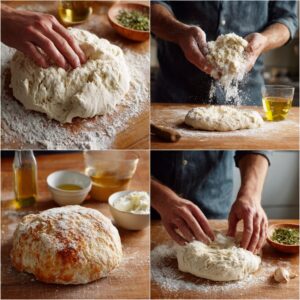Robertas Pizza Dough Recipe: Perfect pizza begins with a pizza dough recipe, which Roberta’s perfected. Each bite of pizza from Roberto’s Pizzeria, located in Brooklyn, captures a rich blend of taste and texture while remaining light. It has maintained a wonderfully crispy texture while being soft on the inside. Serving pizza is an art, and with this recipe, every enthusiast is sure to find it rewarding.
Every pizza dough recipe’s dough is made using different ingredients, thus making it a different dish. Keeping it simple, Roberta’s pizza recipe has the basics, which are all-purpose. While there are a few simple-to-find ingredients like flour, yeast, salt, and olive oil, the most crucial part is being patient and doing the kneading right. Successfully achieving both of these steps will reward you with a soft pizza dough that serves you well for both thick and thin pizzas.
You will never want to go back to purchased pizza dough after trying Roberta’s Pizza Dough Recipe. It brings the real flavour of wood-fired pizzas to your home. This recipe is not just for making dough, but to help you elevate your pizza experience to the next level. So, with this straightforward dough recipe, you can craft a pizza masterpiece by following the simple steps provided.
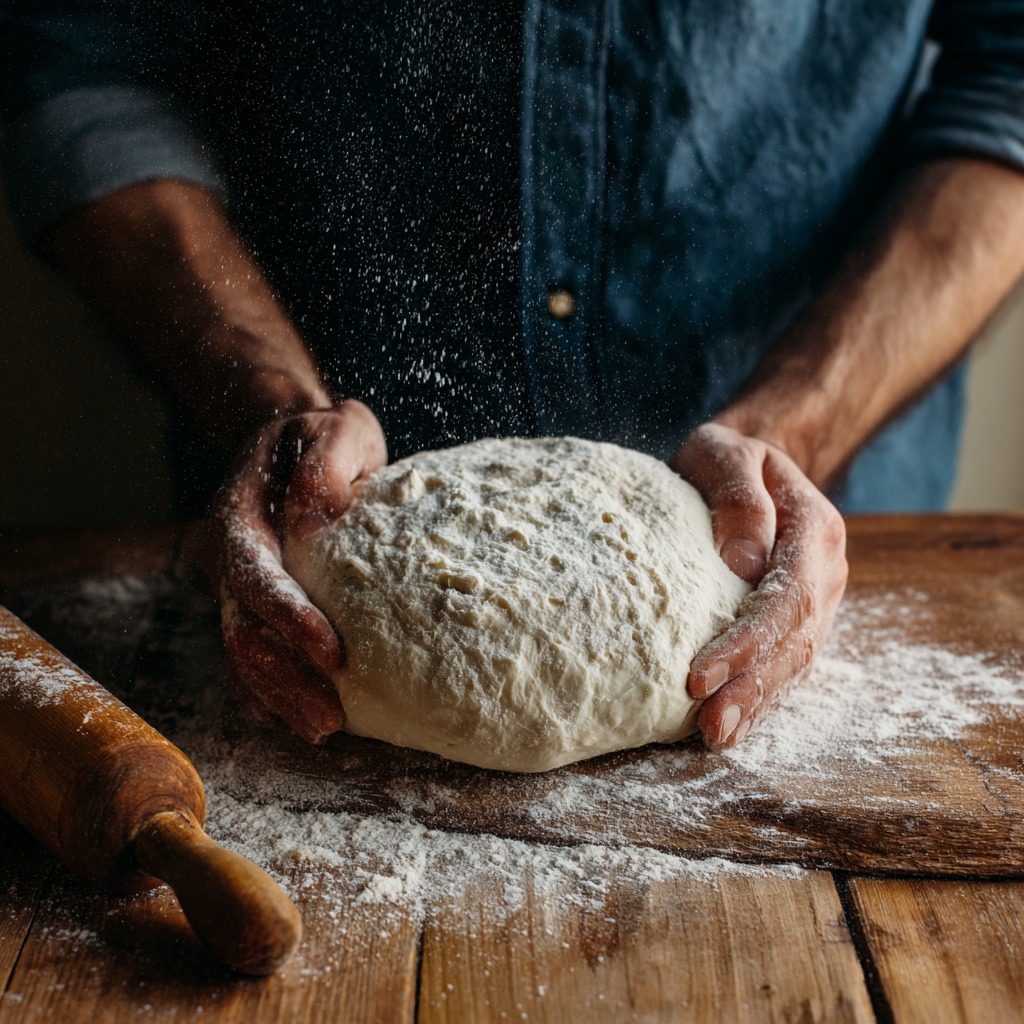
- What is Robertas Pizza Dough Recipe
- Why This Roberta's Pizza Dough Recipe Will Make You Smile
- How to Make Robertas Pizza Dough Recipe
- What to Serve With Robertas Pizza Dough Recipe
- Top Tips for Perfecting Robertas Pizza Dough Recipe
- 1. Use High-Quality Flour
- 2. Allow the Dough to Rise Slowly
- 3. Don't Overwork the Dough
- 4. Preheat Your Oven Properly
- 5. Stretch, Don't Roll
- 6. Use a Pizza Stone or Steel
- 7. Keep Toppings Light
- Ingredient Substitutions for Roberta's Pizza Dough Recipe
- Timing Adjustments for Roberta's Pizza Dough Recipe
- Common Mistakes to Avoid with Roberta's Pizza Dough Recipe
- Storing and Reheating Tips for Roberta's Pizza Dough
- Health Benefits of
- Robertas Pizza Dough Recipe From DishBloom!
- Share Your Twist!
What is Robertas Pizza Dough Recipe
Roberta’s Pizza Dough Recipe is famous for its simple, effective method of achieving a pizza crust. New Yorkers know this pizzeria, Roberta’s, for its pizza dough, which is superb in flavour, thin in construction, and incredibly light. This pizza dough recipe aids in making both thick and thin crust pizza dough. With a satisfying crust, Roberta’s dough is a go-to for any pizza lover. The dough is strongest when topped with numerous fillings, remaining light under pressure.
Roberta’s doesn’t perform any magic when creating its pizza dough recipe. Instead, it’s achieved through simple water, high-gluten flour and some other ingredients needed to complete the dough. Wait, the mixing process requires a lot of patience to let it sit. The rich flavours are the result of Roberta’s pizza dough slowly rising. This not-so-hard recipe from Roberta’s is perfect for any yummy pizza cravings.
What distinguishes Roberta’s Pizza Dough Recipe from several others is its relentless pursuit of pizza perfection. The use of proper methods paired with top-tier ingredients means that the dough will have the ideal amount of flavour, texture and elasticity. For those who consider themselves veterans of pizza-making or are still new to the craft, this recipe guarantees a homemade dough that any pizzeria would be envious of.
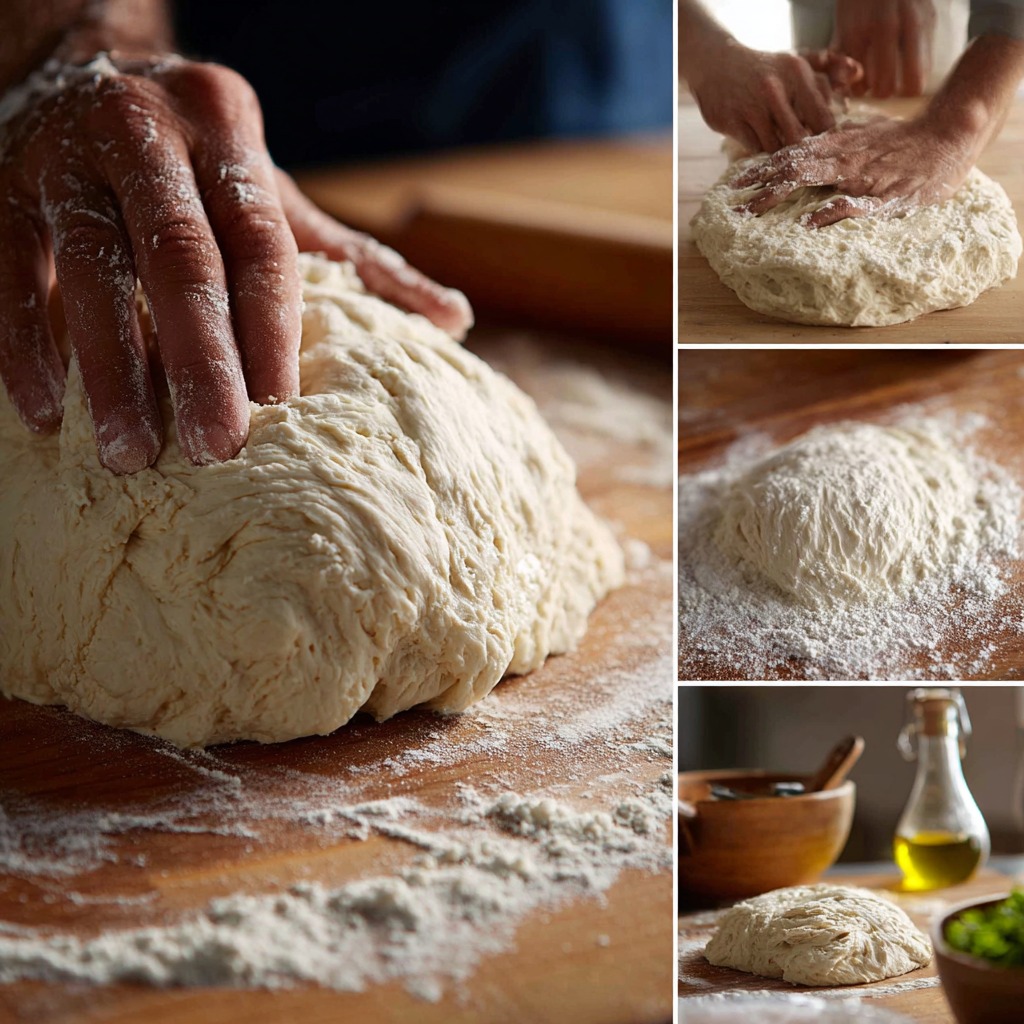
Why This Roberta’s Pizza Dough Recipe Will Make You Smile
Store-Bought Never Compares: Though simple, the ingredients flour, water, yeast, salt, and olive oil go a long way to making a delicious and flavorful dough. Even better, it’s easy to prepare. Roberta’s dough is far superior to anything you would find in the supermarket. It can serve as the base of a pizza and be topped to your heart’s delight: crispy on the outside, chewy in the middle.
Unbounded Creativity: Roberta’s pizza dough is an all-access pass to indulge in endless creativity. Thin and crispy, or thick and airy, it doesn’t matter. Pair it with any topping of your choice, be it classic Margherita or any out there gourmet pizza you crave; you can do no wrong with Roberta’s dough recipe. Moreover, the dough can be frozen, allowing for easy preparation on any day you want to indulge in a pizza.
Pizza Perfection: Bringing the essence of Brooklyn into your home with pizza dough that is years in the making is a remarkable thing. Dough that is slowly fermented is the secret to great pizza, and with Roberta’s recipe, it can be found in any home. It can serve as a blank canvas for all your pizza creations, ensuring that every bite deceives you into thinking it is postcard pizza.
Main Highlights of Robertas Pizza Dough Recipe
Perfect for Home Pizza Makers: Whether you’re a beginner or a seasoned pizza pro, this straightforward recipe ensures that anyone can achieve pizzeria-quality pizza in the comfort of their kitchen.
Authentic Pizzeria Quality: This recipe delivers a dough that mimics the signature taste and texture of the renowned Roberta’s pizzeria in Brooklyn, giving you that classic pizzeria experience at home.
Perfect Balance of Texture: The dough achieves the ideal combination of a crispy, golden crust with a soft, chewy interior, creating a pizza base that is both flavorful and satisfying.
Simple Ingredients: Made with just a few basic ingredients; flour, water, yeast, salt, and olive oil; this dough is easy to prepare yet produces outstanding results.
Customizable for Any Pizza Style: Whether you’re making a thin-crust pizza or prefer a thicker, airier base, this dough recipe is versatile enough to adapt to your desired pizza style.
Long, Slow Fermentation: The dough benefits from a slow rise, which develops rich flavours and enhances its texture, resulting in a pizza dough that stands out from the rest.
Freezer-Friendly: Prepare extra dough and store it in the freezer for spontaneous pizza nights, eliminating the need for last-minute preparation.
Cost-Saving Benefits of Robertas Pizza Dough Recipe
- Affordable Ingredients: The basic ingredients in Roberta’s Pizza Dough, flour, water, yeast, salt, and olive oil, are all inexpensive and commonly found in most households. By making your dough from scratch, you save money compared to buying pre-made dough or frozen pizza crusts from the store.
- No Need for Expensive Takeout: Pizza takeout or delivery can add up quickly, especially if you’re ordering regularly. With Roberta’s Pizza Dough Recipe, you can make multiple pizzas at home for a fraction of the cost of ordering out, all while enjoying fresh, homemade flavours.
- Makes Multiple Pizzas: This recipe yields enough dough for several pizzas, meaning you can make pizza for the whole family or prepare a few pizzas in advance for later meals. It’s a great way to save money by getting more value from a single batch of dough.
- Freezer-Friendly for Future Use: Since the dough can be easily frozen, you can prepare larger batches in advance and store them for future pizza nights. This reduces the need to buy expensive frozen pizzas or last-minute takeout, giving you ready-to-use dough whenever you need it.
- Customise Your Toppings: Making your pizza allows you to use budget-friendly, in-season ingredients for toppings instead of relying on pricey pizza options from restaurants. This gives you the flexibility to control the cost of your pizza while still enjoying a delicious meal.
By preparing your pizza dough at home, you not only enjoy a fresher, more customised pizza but also save significantly on food costs in the long run.
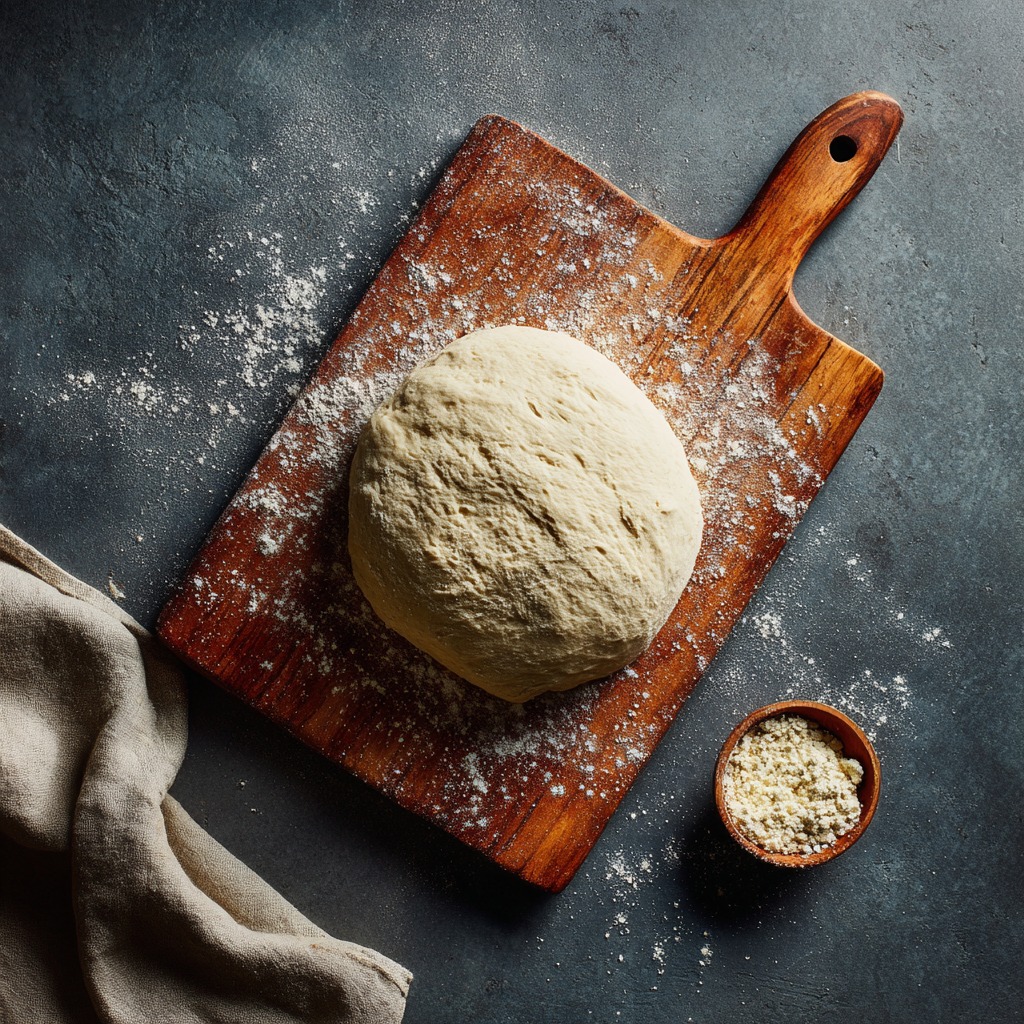
Flavorful Toppings and Customizations
Pizza lovers can enjoy a wide variety of dishes of their own choice. A classic option would be Margherita, which is made with boiled or fried mozzarella, tomatoes, and fresh basil leaves with some olive oil drizzled over it. For a more filling option, consider a meat lover’s pizza with pepperoni, sausage, bacon, and ham, or a BBQ chicken pizza with grilled chicken, red onion, and BBQ sauce, both of which are delightful. A veggie supreme is also colourful, featuring pieces of bell pepper, mushrooms, spinach, and zucchini. For a different taste, Mediterranean pizza is also good, which has a blend of briny and savoury flavours with pieces of Kalamata olives, artichokes, tomatoes, and sun-dried tomatoes, with feta cheese sprinkled over it.
The options are boundless for those who wish to explore new tastes. A white pizza with ricotta cheese, garlic, and olive oil can be enhanced with rich and creamy spinach or mushroom toppings. A sweet and savoury combination of figs, prosciutto, and honey creates a delicious contrast and is a perfect choice if that is what a person is after. From a dietary perspective, one can enjoy a plant-based offering of a vegan pizza topped with roasted veggies and drizzled with balsamic reduction, arugula, and nutritional yeast, which will pamper the taste buds and dietary concerns of the consumer. Roberta’s Pizza Dough Recipe is so versatile that no matter how a person wants to top their pizza, they can create the pizza of their dreams.
How to Make Robertas Pizza Dough Recipe
Quick Overview of Robertas Pizza Dough Recipe
Roberta’s Pizza Dough Recipe yields a restaurant-quality pizza crust that is crispy and chewy at the same time. As with everything at Roberta’s, the dough is straightforward and made with basic ingredients: flour, olive oil, yeast, water, and salt. Additionally, the dough is straightforward to prepare since it can be used to make any pizza crust. Moreover, you can customise and tailor it to your needs and preferences, from a thinner crust to a thicker one, and it will accommodate your toppings.
Roberta’s Pizza Dough is rich in flavour, encapsulating the taste of an authentic pizza, through the slow fermentation process, which adds depth and richness to the dough. You can prepare larger batches in advance, freeze them and take them out for those pizza nights. An excellent recipe for pizza lovers, this dish will taste delicious, and the process is simple, making it perfect for every level of experience.
Key Ingredients for Robertas Pizza Dough Recipe
- High-Gluten Flour: This flour provides the dough with the structure and elasticity needed for a chewy, airy texture. It’s the foundation of the dough and contributes to the perfect pizza crust.
- Water: Warm water is used to activate the yeast and bind the flour together. The water’s temperature plays a crucial role in ensuring the dough rises properly.
- Active Dry Yeast: Yeast is the leavening agent that makes the dough rise, giving it a light, fluffy texture. The yeast helps create those delicious bubbles in the crust that contribute to its airy structure.
- Salt: Salt adds flavor to the dough and strengthens the gluten, helping the dough hold its shape and texture.
- Olive Oil: Olive oil enhances the dough’s flavor, providing a subtle richness and contributing to a slightly crispy crust.
These key ingredients work together to create the perfect base for your pizza, resulting in a dough that’s flavorful, versatile, and easy to customize with your favorite toppings.

Ingredient List for Robertas Pizza Dough Recipe
1 teaspoon of honey or sugar (optional, to activate yeast)
500 grams of high-gluten flour (or bread flour)
325 ml of warm water
2 teaspoons of salt
1/2 teaspoon of active dry yeast
1 tablespoon of olive oil
Step-by-Step Instructions for Roberta’s Pizza Dough Recipe
Enjoy:
Once baked, remove the pizza from the oven and let it cool for a couple of minutes. Slice and serve your homemade pizza made with Roberta’s delicious pizza dough!
Activate the Yeast:
In a small bowl, combine the warm water and yeast. If you’re using honey or sugar, add it to the mixture as well. Stir gently and let it sit for about 5–10 minutes until it becomes foamy. This indicates that the yeast is activated.
Mix the Dough:
In a large mixing bowl, combine the high-gluten flour and salt. Gradually add the yeast mixture and the olive oil. Stir the ingredients together until a sticky dough forms.
Knead the Dough:
Turn the dough onto a lightly floured surface and knead for about 8–10 minutes. Work the dough until it becomes smooth, elastic, and no longer sticky. If the dough is too sticky, add small amounts of flour as needed.
Let the Dough Rise:
Place the dough into a lightly oiled bowl and cover it with a damp cloth or plastic wrap. Let it rise at room temperature for about 1.5 to 2 hours, or until it doubles in size.
Shape the Dough:
Once the dough has risen, punch it down to release the air bubbles. Divide the dough into portions, depending on how many pizzas you want to make. Roll each portion into a round shape, stretching or rolling it out to your desired thickness.
Preheat the Oven:
Preheat your oven to its highest setting (around 500°F or 260°C). If you have a pizza stone, place it in the oven while it heats up for a crispier crust.
Assemble the Pizza:
Transfer your shaped dough to a pizza stone or baking sheet. Add your favorite toppings, from sauce and cheese to meats and vegetables.
Bake the Pizza:
Bake the pizza in the preheated oven for 7–10 minutes, or until the crust is golden and the cheese is bubbling and slightly browned. Keep an eye on it to avoid overcooking.

What to Serve With Robertas Pizza Dough Recipe
- Fresh Salad: A crisp, refreshing salad makes the perfect side to balance the richness of pizza. Try a simple green salad with mixed lettuce, cherry tomatoes, cucumber, and a light vinaigrette dressing. Alternatively, a Caesar salad with crunchy croutons and parmesan adds a savoury touch.
- Garlic Bread: A classic pairing with pizza, garlic bread is always a crowd-pleaser. Serve warm, crispy bread brushed with butter, garlic, and herbs for the perfect complement to your pizza.
- Roasted Vegetables: For a healthy and flavorful side, serve roasted vegetables like bell peppers, zucchini, mushrooms, and carrots. The caramelised flavours from roasting will enhance the overall meal.
- Antipasto Platter: For a more sophisticated pairing, try an antipasto platter with a variety of cured meats, olives, cheeses, and pickled vegetables. This adds a savoury, tangy contrast to the pizza.
- Bruschetta: Fresh bruschetta with tomatoes, basil, and balsamic vinegar on toasted bread is a delicious appetiser that adds a burst of flavour before your pizza.
- Wine or Craft Beer: A light, crisp white wine like Pinot Grigio or Sauvignon Blanc pairs well with the fresh flavours of pizza. If you prefer beer, a refreshing pale ale or lager complements the dough and toppings.
- Chilli Oil or Hot Sauce: For a spicy kick, serve your pizza with a side of chilli oil or your favourite hot sauce. It adds an extra layer of flavour and heat that enhances the pizza experience.
These sides and beverages will elevate your pizza meal, making it even more enjoyable for any occasion!
Top Tips for Perfecting Robertas Pizza Dough Recipe
1. Use High-Quality Flour
The type of flour you use makes a significant difference in the texture of the dough. High-gluten or bread flour creates a chewy, airy texture ideal for pizza. If possible, opt for “00” flour, commonly used in Italian pizzerias, for an even more authentic experience.
2. Allow the Dough to Rise Slowly
Patience is key. Let the dough rise for at least 1.5 to 2 hours at room temperature to achieve the best texture. For even better flavour, you can refrigerate the dough overnight for a slow fermentation that enhances its taste.
3. Don’t Overwork the Dough
Knead the dough until it’s smooth and elastic, but avoid overworking it. Kneading too much can cause the dough to become tough. Aim for about 8-10 minutes of kneading to achieve the right consistency.
4. Preheat Your Oven Properly
To achieve a crispy, golden crust, make sure your oven is preheated to its highest temperature—ideally around 500°F (260°C). If using a pizza stone, let it heat up for at least 30 minutes before baking the pizza.
5. Stretch, Don’t Roll
When shaping the dough, try stretching it by hand instead of rolling it with a pin. This helps maintain the air bubbles in the dough, giving it a lighter texture. Gently pull the dough from the centre outwards to form an even, round shape.
6. Use a Pizza Stone or Steel
If you want a crispy crust, baking on a preheated pizza stone or steel is essential. These tools help evenly distribute heat, creating a perfectly crisp base without burning the toppings.
7. Keep Toppings Light
Avoid overloading your pizza with toppings. Too many toppings can make the dough soggy and prevent it from cooking properly. Use a light hand with sauce, cheese, and toppings to allow the dough to shine.
By following these tips, you’ll be able to create pizza dough that’s as delicious and authentic as Roberta’s, with a perfect balance of crispiness and chewiness every time.
Ingredient Substitutions for Roberta’s Pizza Dough Recipe
1. Flour
- All-Purpose Flour: If you don’t have high-gluten or bread flour, you can use all-purpose flour, although the dough may be slightly less chewy and elastic.
- Gluten-Free Flour: For a gluten-free version, use a gluten-free all-purpose flour blend. Be sure also to add a teaspoon of xanthan gum to help with structure and elasticity.
2. Active Dry Yeast
- Instant Yeast: You can substitute instant yeast for active dry yeast in the same amount. Instant yeast doesn’t need to be activated in warm water, so that you can mix it directly with the flour.
- Fresh Yeast: If using fresh yeast, use about three times the amount (e.g., 15 grams of fresh yeast for 5 grams of dry yeast). Dissolve it in water before using.
3. Olive Oil
- Vegetable Oil: Vegetable oil or canola oil can be used instead of olive oil, though it will alter the flavour slightly. Olive oil adds a subtle richness to the dough that vegetable oils lack.
- Butter: If you prefer a richer, slightly buttery flavour, you can substitute olive oil with melted butter, but the dough may be slightly softer.
4. Salt
- Sea Salt or Kosher Salt: If you don’t have regular table salt, sea salt or kosher salt can be used. Just be sure to adjust the quantity, as these salts are coarser, and you may need a little more.
- Himalayan Pink Salt: This can also be used as a substitute, providing a slightly different flavour, but still a good alternative.
5. Honey or Sugar
- Maple Syrup or Agave: If you don’t have honey, maple syrup or agave can be used as a natural sweetener to activate the yeast. Just use a similar amount as you would honey.
- Brown Sugar: Brown sugar is another option, giving the dough a richer flavour.
By using these substitutions, you can still achieve a delicious pizza dough even if you don’t have every ingredient on hand!
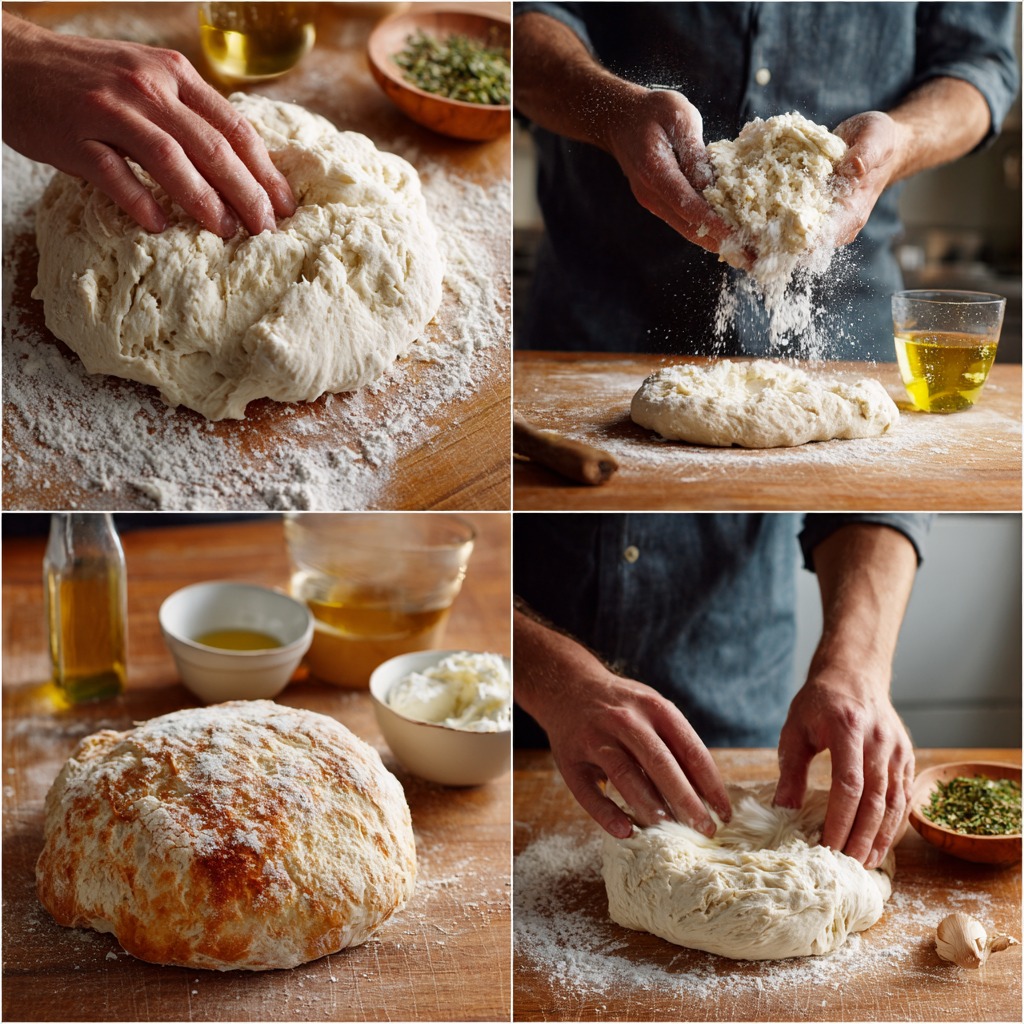
Timing Adjustments for Roberta’s Pizza Dough Recipe
1. Rising Time
- Room Temperature Rise: The dough usually takes about 1.5 to 2 hours to double in size at room temperature. If your kitchen is cooler, let the dough rise for up to 3 hours. Be patient, as a longer rise results in better flavour.
- Overnight Rise: For enhanced flavour, you can let the dough rise slowly in the fridge overnight. This slow fermentation can take anywhere from 12 to 24 hours. Just remember to bring the dough to room temperature before shaping it.
2. Kneading Time
- Kneading Adjustments: Kneading should take around 8-10 minutes. If you’re using a stand mixer, the process might take about 5-7 minutes. If you’re kneading by hand, make sure the dough is smooth and elastic. You may need to knead for a bit longer if the dough feels too sticky.
3. Baking Time
- Oven Preheating: Always preheat your oven for at least 30 minutes, especially if you’re using a pizza stone or steel. This ensures the pizza cooks evenly with a crispy crust.
- Pizza Baking: Bake your pizza for 7-10 minutes at 500°F (260°C). If you prefer a softer crust, you can reduce the baking time slightly. For a crispier crust, bake for 10 minutes or until the edges turn golden brown.
- Frozen Dough: If using dough from the freezer, allow it to thaw for 2-3 hours in the fridge or let it sit at room temperature for about 1 hour before shaping and baking. The baking time may also increase slightly if the dough is cold.
Adjusting these timings will ensure that your pizza dough comes out perfectly, no matter the conditions!
Common Mistakes to Avoid with Roberta’s Pizza Dough Recipe
1. Using Cold Water
- Mistake: Using cold water to activate the yeast can result in slow or incomplete activation, leading to poor dough rise and flavour.
- Solution: Always use warm water (about 100°F or 37°C) to activate the yeast. It helps kickstart the fermentation process, ensuring a light, airy dough.
2. Not Letting the Dough Rise Enough
- Mistake: Rushing the rising process and not allowing the dough enough time to rise can lead to a dense, heavy crust.
- Solution: Be patient and allow the dough to rise for at least 1.5–2 hours at room temperature or refrigerate it for a slow overnight rise for better flavour and texture.
3. Overkneading or Underkneading the Dough
- Mistake: Kneading the dough too long or not enough can lead to issues with texture. Overkneading can make the dough tough, while underkneading results in a sticky, uneven dough.
- Solution: Knead the dough for about 8-10 minutes until smooth and elastic. If you’re using a stand mixer, knead for 5-7 minutes.
4. Overloading the Pizza with Toppings
- Mistake: Using too many toppings can overwhelm the dough, making it soggy and difficult to bake correctly.
- Solution: Keep toppings light and evenly distributed. This will allow the dough to cook evenly, creating a crispier crust.
5. Not Preheating the Oven Enough
- Mistake: Not preheating the oven to the right temperature can lead to a soggy, undercooked crust.
- Solution: Preheat your oven for at least 30 minutes at its highest temperature (500°F or 260°C), especially if you’re using a pizza stone or steel. This ensures a crispy crust and properly cooked pizza.
6. Rolling the Dough Too Thin
- Mistake: Rolling the dough too thin can result in a dry, overly crisp crust.
- Solution: Stretch the dough by hand instead of rolling it. This maintains the dough’s structure and air bubbles, resulting in a more flavorful, tender crust.
7. Using the Wrong Type of Flour
- Mistake: Using all-purpose flour instead of high-gluten or bread flour can make the dough less chewy and airy.
- Solution: For the best results, use high-gluten or bread flour. If you don’t have it, you can still use all-purpose flour, but the dough may be slightly different.
Avoiding these common mistakes will help you achieve the perfect pizza dough every time!
Storing and Reheating Tips for Roberta’s Pizza Dough
1. Storing Pizza Dough
- Room Temperature Storage: If you plan to use the dough within a few hours, cover the bowl with plastic wrap or a damp cloth and leave it at room temperature to rise. Once it’s doubled in size, use it immediately for shaping and baking.
- Refrigerating: For more extended storage, after the dough has risen, punch it down and store it in an airtight container or wrap it tightly in plastic wrap. Please place it in the fridge for up to 3 days. Let it come to room temperature for 30-60 minutes before shaping and baking.
- Freezing: You can freeze pizza dough for up to 3 months. After the dough has risen, punch it down, divide it into portions, and wrap each portion tightly in plastic wrap or foil. Store the wrapped dough in a freezer-safe bag or container. When ready to use, transfer it to the fridge the night before or leave it out at room temperature for a few hours to thaw.
2. Reheating Leftover Pizza
- Oven Reheat: Preheat your oven to 375°F (190°C). Place the leftover pizza on a baking sheet and cover it loosely with foil to prevent it from drying out. Reheat for 8-10 minutes or until the crust is warmed through and the cheese is melted. For a crispier crust, remove the foil during the last few minutes of reheating.
- Stovetop Reheat: For a quick reheat, use a skillet. Place the leftover pizza in the skillet over medium heat and cover with a lid to trap heat. Heat for about 5 minutes or until the crust is crisp and the cheese is melted. You can add a few drops of water to the pan before covering it to create steam, helping melt the cheese faster.
- Microwave Reheat: While not ideal for maintaining a crispy crust, you can microwave leftover pizza by placing it on a microwave-safe plate and covering it with a damp paper towel. Heat in 30-second intervals until the pizza is warmed through. For a better texture, follow up with a quick minute or two under the broiler to crisp the crust.
By following these storing and reheating tips, you can enjoy fresh pizza dough and leftover pizza without losing the delicious texture and flavour!
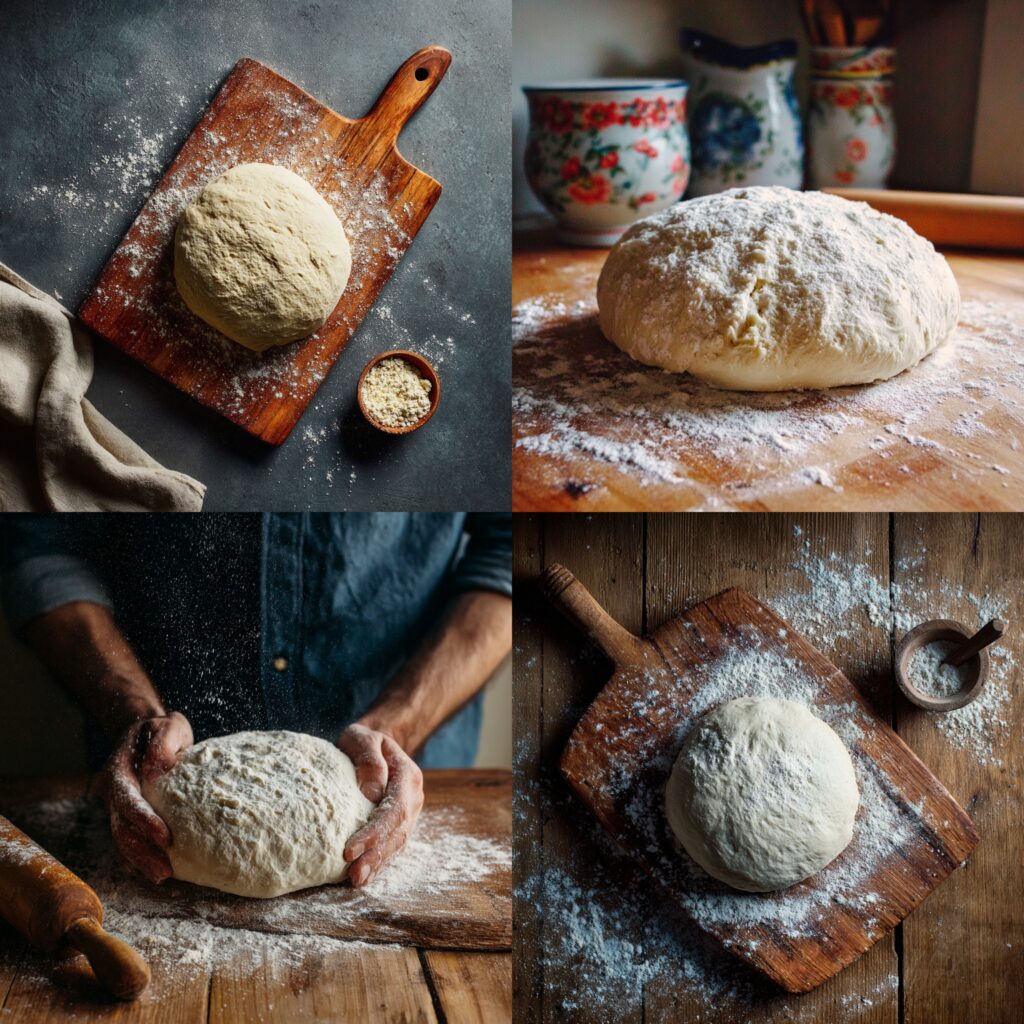
Health Benefits of
| Health Benefit | Description |
|---|
| Whole Grain Option | If using whole wheat flour, the dough becomes a good source of fiber, which aids in digestion and helps maintain a healthy weight. |
| Customizable Ingredients | You can tailor the dough to suit dietary needs, such as using gluten-free flour or reducing salt for a healthier version. |
| Rich in Carbohydrates | The dough provides a good source of energy, especially if you choose high-gluten flour for a more filling and sustaining meal. |
| Low in Preservatives | Homemade pizza dough avoids the artificial preservatives and additives often found in store-bought dough, making it a cleaner option. |
| Healthy Fats from Olive Oil | Olive oil provides monounsaturated fats, which are heart-healthy and can help reduce the risk of heart disease. |
| No Added Sugars | Unlike many commercial pizza doughs, Roberta’s recipe doesn’t contain added sugars, offering a more wholesome option for your meal. |
| Control Over Sodium Levels | You can control the amount of salt in your dough, which is especially important for those watching their sodium intake. |
| Rich in Protein (from Flour) | The high-gluten or bread flour used in the recipe provides a source of plant-based protein, which is essential for muscle repair and growth. |
Why These Ingredients Are Good for You in Roberta’s Pizza Dough Recipe
High-Gluten or Bread Flour
- Nutritional Benefit: High-gluten or bread flour is rich in complex carbohydrates, which provide long-lasting energy. It also contains a decent amount of protein, which helps in muscle repair and supports healthy skin and hair.
- Why It’s Good for You: This flour helps maintain stable blood sugar levels and provides a slow, steady release of energy, making it a healthier option than refined white flour.
Water
- Nutritional Benefit: Water is essential for hydration and supports numerous body functions, including digestion, nutrient transport, and temperature regulation.
- Why It’s Good for You: Proper hydration helps maintain energy levels, improves skin health, and aids in the absorption of nutrients from food.
Active Dry Yeast
- Nutritional Benefit: Yeast is a source of B vitamins, including B1, B2, B3, and folate, which are essential for energy production and brain function.
- Why It’s Good for You: The fermentation process with yeast also helps improve digestion, as it makes the dough easier to break down, especially for those sensitive to gluten.
Salt
- Nutritional Benefit: Salt is an essential mineral that helps maintain fluid balance in the body and supports nerve function and muscle contraction.
- Why It’s Good for You: In moderation, salt helps regulate blood pressure and prevents dehydration, although it’s important not to overdo it.
Olive Oil
- Nutritional Benefit: Olive oil is rich in monounsaturated fats, which are known to promote heart health by reducing harmful cholesterol levels. It also contains antioxidants and vitamin E.
- Why It’s Good for You: The healthy fats in olive oil reduce the risk of heart disease and stroke, while antioxidants help protect the body from harmful free radicals, promoting overall wellness.
Honey or Sugar (Optional)
- Nutritional Benefit: Honey contains small amounts of vitamins and minerals like vitamin C, calcium, and iron. It also has antioxidants that support the immune system.
- Why It’s Good for You: Using honey instead of sugar can provide a more natural, less processed sweetness, along with potential antimicrobial and anti-inflammatory benefits.
By using these natural, wholesome ingredients, Roberta’s Pizza Dough not only tastes great but also offers nutritional benefits that contribute to a balanced and healthy diet!
Robertas Pizza Dough Recipe From DishBloom!
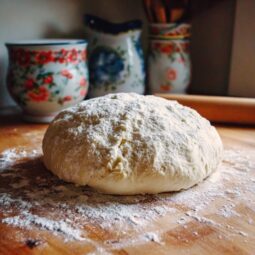
Roberta’s Pizza Dough Recipe
Equipment
- Large mixing bowl
- Measuring cups and spoons
- Stand mixer (optional)
- Dough scraper (optional)
- Pizza stone or baking sheet
- Rolling pin (optional, for rolling dough)
- Plastic wrap or damp cloth (for covering dough)
Ingredients
- 500 grams high-gluten flour or bread flour
- 325 ml warm water 100°F/37°C
- 2 teaspoons salt
- 1/2 teaspoon active dry yeast
- 1 tablespoon olive oil
- 1 teaspoon honey or sugar optional, for activating yeast
Instructions
- Activate the Yeast: In a small bowl, mix warm water, yeast, and honey (if using). Let it sit for 5-10 minutes until it becomes foamy.
- Mix the Dough: In a large mixing bowl, combine the flour and salt. Slowly add the yeast mixture and olive oil, stirring until a sticky dough forms.
- Knead the Dough: Turn the dough onto a lightly floured surface and knead for 8-10 minutes until smooth and elastic. Alternatively, use a stand mixer with a dough hook for 5-7 minutes.
- Let it Rise: Place the dough in a lightly oiled bowl and cover with plastic wrap or a damp cloth. Let it rise at room temperature for 1.5–2 hours or until it doubles in size. For better flavor, refrigerate the dough overnight.
- Shape the Dough: Punch down the dough, divide it into portions, and roll or stretch it out to your desired thickness.
- Preheat the Oven: Preheat the oven to 500°F (260°C), and if using a pizza stone, let it heat for at least 30 minutes.
- Bake the Pizza: Transfer the shaped dough to a pizza stone or baking sheet. Add toppings and bake for 7-10 minutes or until the crust is golden and the cheese is bubbling.

Notes
- Flour Choice: Using high-gluten or bread flour will give you a chewier, more elastic dough. You can substitute all-purpose flour, but the texture may be slightly different.
- Fermentation: For a more flavorful dough, refrigerate it overnight to allow for a slow rise.
- Topping Suggestions: Keep toppings light to avoid soggy crust. Use your favorite ingredients like fresh mozzarella, tomatoes, basil, pepperoni, or vegetables.
- Storage: If you have leftover dough, it can be stored in the fridge for up to 3 days or frozen for up to 3 months. Be sure to allow it to come to room temperature before shaping and baking.
- Preheating: Make sure your oven is fully preheated to ensure a crisp crust. If using a pizza stone, let it heat for at least 30 minutes before baking the pizza.

Share Your Twist!
Get creative with Roberta’s Pizza Dough! Here are some simple ideas to make it your own:
- Herb-Infused Dough: Add dried oregano or basil for a flavorful crust.
- Garlic Butter Crust: Brush with melted butter and garlic for extra flavor.
- Whole Wheat Dough: Use half whole wheat flour for a healthier option.
- Cheese-Stuffed Crust: Stuff the edges with mozzarella for a cheesy surprise.
- Sweet Dough: Add a little sugar or honey for a sweet, dessert-style crust.
What twist will you add to your pizza dough? Let us know your favorite variation!
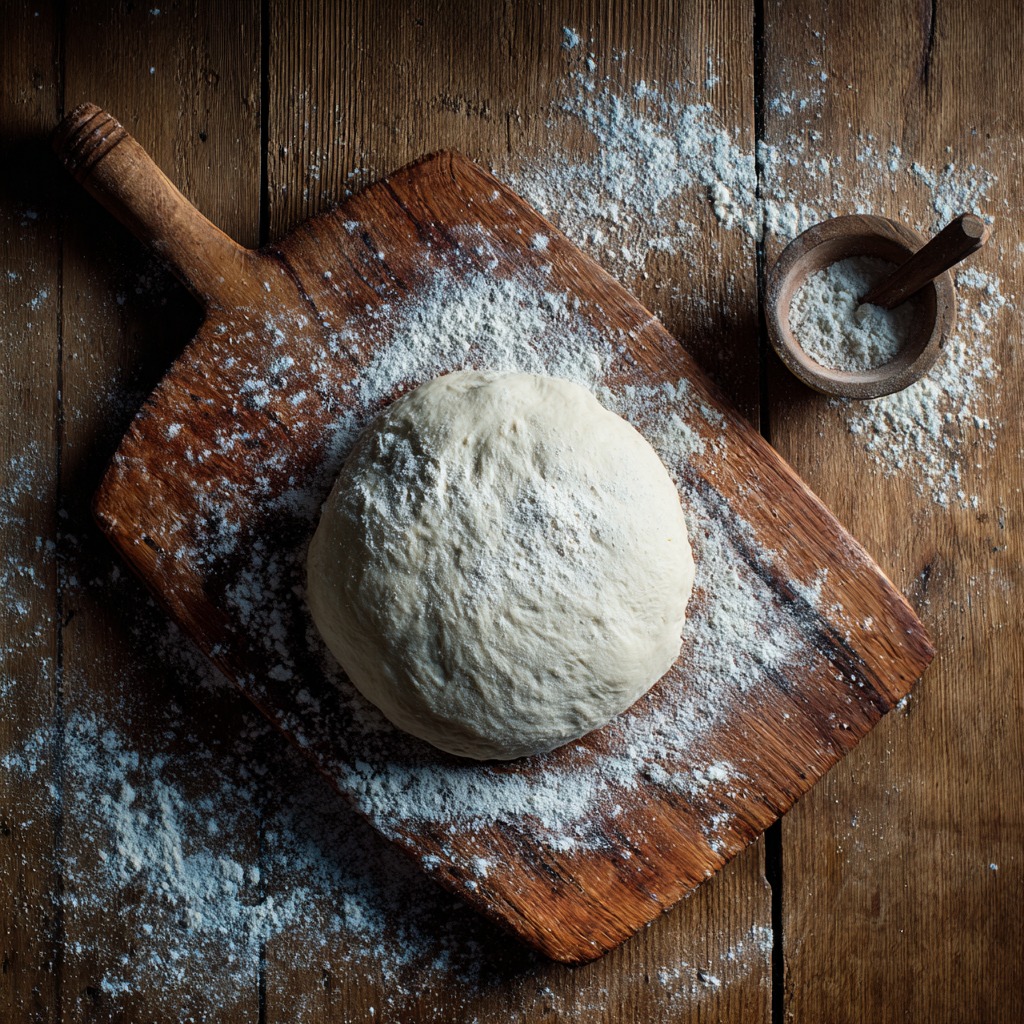
FAQs: Robertas Pizza Dough Recipe
Frequently Asked Questions (FAQs)
What is Roberta’s Pizza Dough Recipe?
Roberta’s Pizza Dough Recipe is a simple, homemade pizza dough that creates a chewy and crispy crust, perfect for making authentic pizza at home.
Can I use all-purpose flour instead of high-gluten flour?
Yes, you can use all-purpose flour, but high-gluten flour will give the dough a chewier, more elastic texture, which is ideal for pizza.
How long should I let the dough rise?
The dough should rise for about 1.5 to 2 hours at room temperature until it doubles in size. For more flavor, you can refrigerate it overnight for a slow rise.
Can I freeze the pizza dough for later use?
Yes, you can freeze the dough after it has risen. Wrap it tightly in plastic wrap and store it in the freezer for up to 3 months. Let it thaw in the fridge overnight before using it.
Can I make this dough gluten-free?
Yes, you can substitute high-gluten flour with a gluten-free all-purpose flour blend. Be sure to also add a teaspoon of xanthan gum to help with structure.

